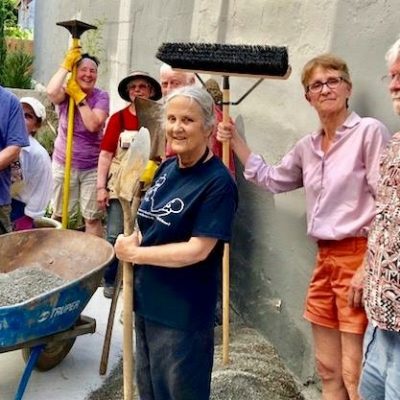
Recording Library - Managing Property and Work
Sessions in this topic are about community participation to do the work needed to create and maintain community. From community work days to work tracking systems, there are all sorts of strategies for working together to get it all done.
This session will take attendees through the process of developing a new policy that addresses a contentious issue in the community: participation. Attendees will learn how Wild Sage members worked in a small team to deal with their competing views and to create true consensus, rather than simply compromise.
In my 25 years of studying and living in cohousing, I have drastically changed my view of workshare. Initially I was wedded to the idea of measuring and reporting time. I tracked my work on spreadsheets. I designed a database, defined jobs, estimated hours, etc. In the end I was the least interested in filling out my forms. But workshare was finally going very well at Takoma Village. What was working?
Inspired by the cohousing model of collaboration, mutual support, and trust, your community can bring generosity and abundance to sharing the use of the Common House and other spaces. Using examples from cohousing communities in the Pacific Northwest, Mike will share approaches to revenue generation, maintenance, and ongoing stewardship. A social equity lens will help identify resource contributions that are valued, meaningful, and more widely available to all those participating in community.
We will talk about how to get your community’s work space or woodshop up and running, what to include, and how to manage it over time.
How do communities decide whether members can make changes to their homes the impact the rest of the community? Laura shares the Design Review process developed by her community over 20 years of experience living together.
Living in community is not only the sharing of resources or common meals or participating in governance, it is also knowing what to do when an emergency occurs. This session will describe how one community developed its emergency preparedness and its 9-1-1 protocol through practice. This topic is targeted towards forming and established communities to thoughtfully anticipate and practice emergency scenarios from medical to catastrophic in order to minimize trauma.
How do you get all your community work done? Each cohousing group needs to decide what tasks to include in community work, what system to use to connect each member with their tasks, how to organize meals work in particular, and whether and how to enforce work agreements. In this session, we will explore the “affinity work system” used at Pioneer Valley Cohousing which has just celebrated its 25th year and is still going strong thanks to a robust work system.
Does your heater keep breaking, are the windows drafty, or is the siding worn out? Maintenance projects can seem like a chore, but they are also opportunities to save money over time and to dramatically reduce your carbon footprint.
Questions to guide your participation agreement.
Strategies for making it work.
Members from three different cohousing communities will present their community’s policies. Then open it for discussion with prompts such as ‘is it important?’ ‘why is it important?’ and ‘how do we get more?!’
Getting the work done in community requires a system. There is a great deal of variety in terms of the systems adopted by different communities. In this WebChat, Mary lays out the options and the choices communities need to make to design the system that works for them.

